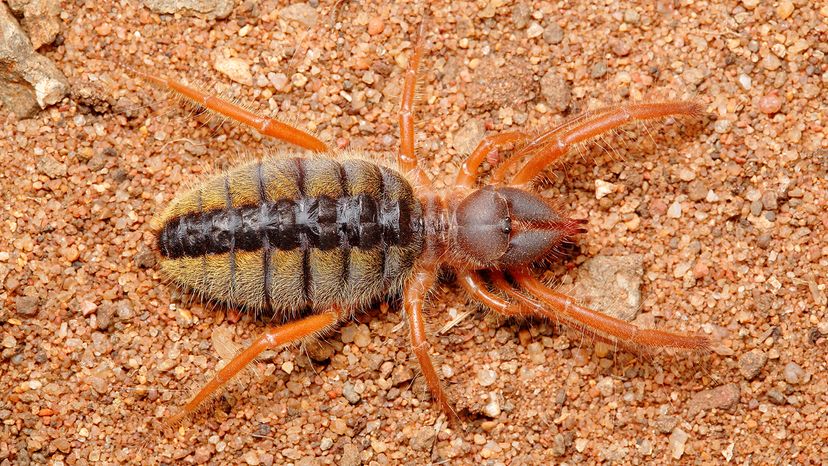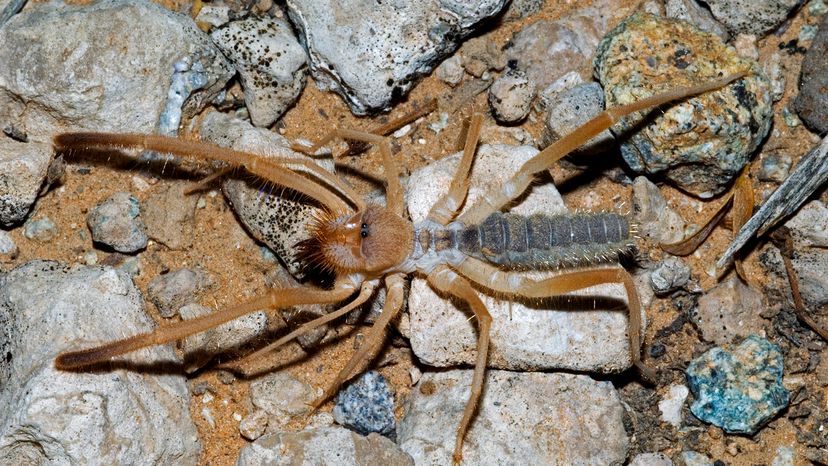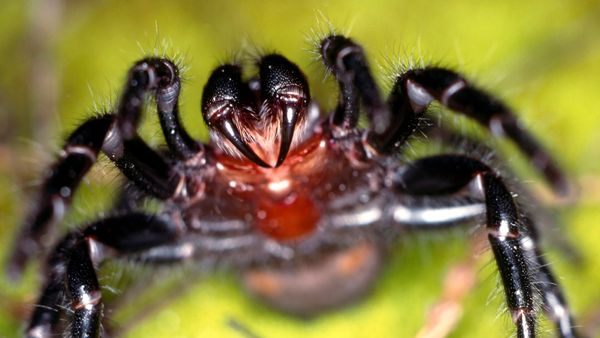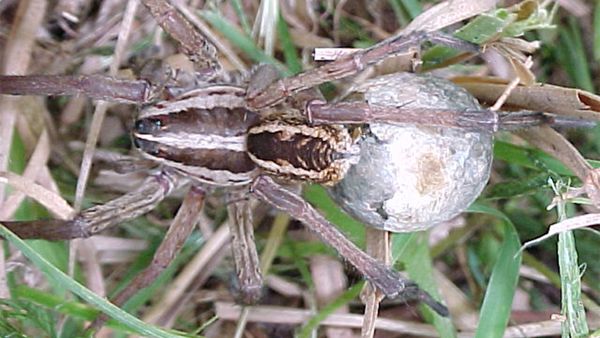
Some animals have a reputation that's hard to shake. Take the camel spider: Many are familiar with them based on photos that came out of the Iraq War in the early 2000s: a giant desert spider with a leg span somewhere between the size of a pack of cigarettes and a full-grown man's calf (this turned out to be a trick of forced perspective).
There were rumors they ran through the desert screaming and jumping on camels, that they would hide in ambush in sleeping bags, ready to inject you with venom. But U.S. military personnel are not the first to fuel urban legends about the camel spider (also called the sun spider).
Advertisement
In South Africa, they're called haarskeerders, or beard trimmers, because some people believe if you sleep on the ground, camel spiders will come trim your hair in your sleep and use it to line their nests. In North Africa and the Middle East, legend has it that these vicious predators nip at the bellies of camels until their intestines fall out so they can eat them or that they lay eggs in their stomachs.


